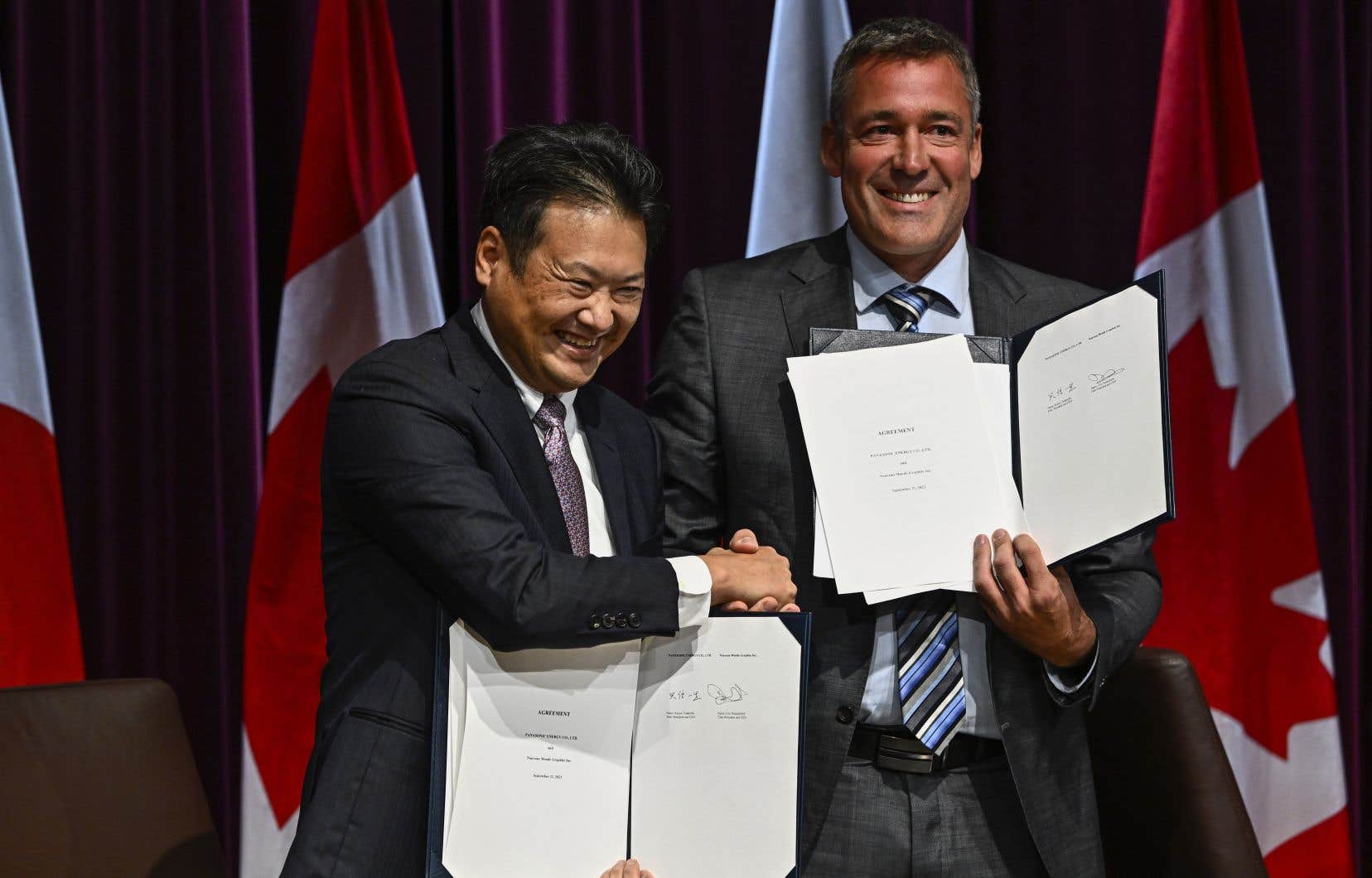This text is part of the special Research section
Quebec aims to become an important player in the battery sector. Concordia University professor Karim Zaghib, a leading authority on lithium-ion batteries, has been working on this for several years, in collaboration with companies like Nouveau Monde Graphite (NMG).
NMG is developing an integrated source of battery materials in Quebec. On February 15, it announced that GM and Panasonic (which manufactures batteries for Tesla) were committed to buying 85% of the production of its Bécancour factory. Panasonic will also invest US$25 million to support its growth.
The company began collaborating with Karim Zaghib in 2018, when he worked for Hydro-Québec. The latter had signed a licensing contract and a research and development agreement with NMG allowing this company to exploit technologies patented by Hydro-Québec. And this, for the purposes of transforming graphite for its use in lithium-ion batteries.
The partnership with Karim Zaghib, now a professor of chemical and materials engineering at Concordia University, has never really ended. And it bears fruit. “Our collaboration with Karim Zaghib helped close the agreement with Panasonic,” recognizes founder and CEO Éric Desaulniers. Their technology director has known him since the 1990s and knows that Karim’s presence in our projects is a guarantee of credibility. »
He recalls that Karim Zaghib devoted his life to working on battery materials, particularly graphite. He was also the first to introduce natural graphite and nanotitanium into lithium-ion batteries based on iron phosphate. This has enabled the development of very safe fast-charging technology, which has been used in electric vehicles and energy storage. “We often hear that he is a leading authority in his field, but we are fortunate to witness it directly,” emphasizes Éric Desaulniers.
Quebec’s assets
Professor Zaghib does not budge: “Quebec has a unique ecosystem to distinguish itself in the lithium-ion battery design market,” he assures. This market is currently dominated by China, South Korea and Japan. He recalls that Quebec produces all the materials used in the battery (copper, silicon, graphite, lithium, aluminum, etc.). The only exception: manganese, which is found right next door, in New Brunswick.
Asian manufacturers must import their minerals from all over the world. This type of supply requires a lot of travel, which runs counter to the decarbonization objectives of transport electrification. It also threatens human rights in certain countries where mineral extraction relies partly on child labor and leads to armed conflicts and forced displacement of populations.
“In addition, we transform these local materials with hydroelectricity and not with energy from coal-fired power plants, as is often the case in other producing countries,” says the professor. So we’re creating much greener battery materials. »
Certify our products
These assets correspond to expectations on the market. Increasingly aware of the consequences of climate change, consumers are demanding truly ecological electric vehicles. This pushes some manufacturers to choose suppliers capable of meeting this demand.
Recently, Professor Zaghib’s research focused on the certification of lithium-ion battery materials built with Quebec’s critical minerals, from mining to recycling, and on traceability. In some cases, this also means developing new processing processes that do not generate waste and have fewer environmental impacts. “We want to develop certifications that prove that batteries from the Quebec ecosystem are green,” he summarizes.
He is collaborating with NMG on this. The company is one of the first to rely entirely on electrical equipment in its Saint-Michel-des-Saints mine. Students from Karim Zaghib’s team are observing this approach with a view to including it in certifications.
The team is also looking at another challenge. Some graphite particles generated by NMG are too small to be used in lithium-ion batteries. “We are considering new applications in energy storage for these residues, in order to eliminate any waste in production,” explains the professor.
For his part, Éric Desaulniers recalls that his company has around fifteen collaborations with university researchers. “This is essential for developing longer-term projects, which aim to increase our productivity and reduce our carbon footprint,” he emphasizes. Without it, we will stagnate. »
This content was produced by the Special Publications team at Duty, relating to marketing. The writing of the Duty did not take part.
